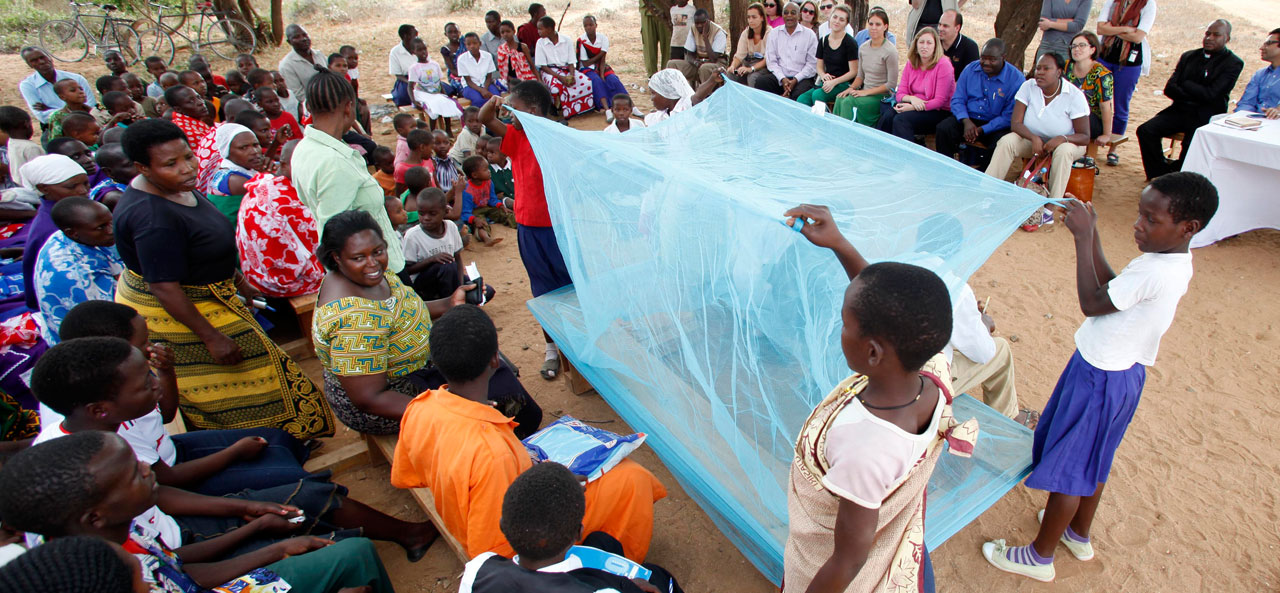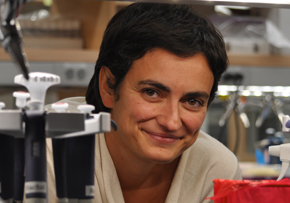


- Brazil: Marcia Castro and Cássio Peterka
- China: Guoding Zhu and Marcel Tanner
- Mozambique: Leonardo Simão
- Senegal: Daouda Ndiaye and Dyann Wirth
- Sri Lanka: Deepika Fernando and Christian Lengeler
This session will include a formal presentation and moderated discussion of malaria control and elimination over the past decade. A primary focus will be the ongoing transition from a ‘one size-fits-all’ approach to a tailored, country-specific approach toward malaria control and elimination.
Learning Objectives:
- To understand the transition in malaria epidemiology over the past decade, including successes, failures, and key lessons learned.
- To appreciate the opportunities and challenges to malaria elimination in the next decade and the implications for the ultimate goal of malaria eradication.
- To understand how countries evaluate the case for elimination, the processes for translating ‘what can be achieved’ into long term targets for ‘what should be achieved,’ and evaluating the case for global malaria eradication.
This session built upon the learnings of the “The Biology of Malaria” pre-course video lecture. Participants engaged in an active discussion of the biological implications of malaria eradication, including critical biological features of the parasite and current knowledge gaps. Key discussion topics included parasite biology (e.g., cell biology, parasite genetics, the biochemistry of the parasite, red cell interaction, drug action, and resistance mechanisms), malaria epidemiology, and parasite-vector relationships.
Learning Objectives:
- To understand the biology, life cycle-basis for this disease, and global public health aspects of malaria, including methods of measurement, the magnitude of the problem, and consequences of the disease on the population.
- To understand the incidence and distribution of infection and disease in human populations, determinants of frequency and distribution.
- To consider the interrelationship of organisms and their environments, including identifying ways of reducing the incidence and/or severity of malaria within populations, obstacles, and consequences.
This session built upon the “Vector Biology and the Dynamics of Malaria Transmission” pre-course video lecture and covered different aspects of mosquito biology that are key to parasite development and malaria transmission. Discussions centered on current vector control strategies and future methods that can aid in disease control.
Learning Objectives:
- To develop an understanding of the complexity of malaria transmission by the mosquito vector.
- To discuss present challenges facing vector control.
- To identify novel opportunities to block malaria transmission by the mosquito.
History has provided us with only one successful eradication attempt against a human disease: smallpox. However, polio and Guinea worm (dracunculiasis) appear very close to eradication. While there are significant biological, ecological, clinical and epidemiological differences between malaria and these three other diseases, the social and political challenges are more similar and history should be used, in part, to guide future eradication efforts. In this session, we will review some of the global lessons learned from previous and current eradication attempts that have come to embody the eradication zeitgeist. But we will also deploy a slightly different lens on the lessons learned by reviewing histories of elimination in specific countries that we suspect will be critical for malaria eradication. After an opening presentation, the class will be divided into nine groups of six-seven students each. Each will be given one of three attached papers from which to draw novel lessons learned on national eliminations during a global eradication campaign.
Learning Objectives:
- Identify key social or political factors responsible for elimination successes at the national level
- Contrast the approaches to smallpox eradication in India and the Democratic Republic of Congo.
- Recognize that there are lessons to be learned within as well as across nations.
The tools and tactics required for active infection detection to support malaria elimination are different than those that have been successful for passive case detection in malaria control. This session will provide participants to propose solutions for diagnostics for elimination – then to refine those solutions through recognition of the differences between active and passive case detection; the definition of the unique diagnostic needs and product gaps for elimination/active infection detection; the translation of those needs to biomarker and product requirements; an analysis of existing tools against those requirements and an understanding of the current product pipeline.
Learning Objectives:
- To identify gaps with existing diagnostics for elimination needs.
- To provide an understanding of the diagnostic product development perspective/ process, including Target Product Profile (TPP) development and new diagnostic products to support malaria elimination.
- To provide an overview of the unique needs associated with correctly identifying the asymptomatic reservoir.
- To provide an overview of existing diagnostic product strengths and limitations, products in the development pipeline, and “what to expect” in the next five years.

This session built upon the learnings of the “Genomic Approaches to Malaria Elimination” pre-course video lecture. An introduction to the emerging field of genomic epidemiology was provided, including use case scenarios to leverage genetic data for improved decision making in malaria control and elimination settings. A primer on relevant DNA technologies and population genetic principles was provided followed by an interactive discussion of the practical considerations for developing local capacity to implement this approach.
Learning Objectives:
- To understand the basic principles of genomic epidemiology and its application to malaria-endemic settings.
- To understand how parasite genetic data can be generated, analyzed, and used for an improved understanding of malaria epidemiology in various contexts and settings.
- To identify use case applications of parasite genetic data to improve malaria control and elimination strategies and decision making.
This session provided an overview of the current knowledge base of malaria treatment with a focus on the use of antimalarials for elimination purposes. Emphasis was placed on the differences between the “control mode” versus the “elimination mode,” including a discussion of past and current efforts to eliminate malaria through the use of drug-based strategies. Participants were encouraged to consider the adequacy of different drug regimens used for elimination, as opposed to control purposes. These learnings were contextualized in light of current World Health Organization recommendations for the use of drugs for elimination purposes.
Learning Objectives:
- To understand the particularities of the use of antimalarial drugs to eliminate malaria.
- To understand the rationale for current recommendations on the use of antimalarial drugs in elimination efforts, and limitations of the use of drugs for elimination purposes.
- To review past and recent Mass Drug Administration (MDA) efforts using antimalarials, and lessons learned regarding their utility as part of wider malaria elimination strategies.
- Brazil: Marcia Castro and Cássio Peterka
- China: Guoding Zhu and Marcel Tanner
- Mozambique: Leonardo Simão
- Senegal: Daouda Ndiaye and Dyann Wirth
- Sri Lanka: Deepika Fernando and Christian Lengeler
This session provided an overview of the challenges to drug discovery and development for malaria. Two specific R&D issues were discussed during this session: 1) how to use the drugs we currently have better and 2) how to find new drugs to replace them, if and when, the current drugs fall to resistance.
Learning Objectives:
- To understand whether or not we have Artemisinin-based Combination Therapy (ACT) untreatable malaria, and if so, when it will arrive in Africa and what we can do if/when it does.
- To discuss how we can find new drugs and why it is important to enhance investments in the early stages of drug development over the next decade.
- To assess the difference between drugs required for the treatment of malaria cases and those for protecting vulnerable populations.
This session will include: short presentation of slides, group discussion and opportunity for question and answers. We will cover an overview of the different types of vaccines in clinical development for P. falciparum and P. vivax malaria, and how these could be deployed and used in the context of current efforts to control and eliminate malaria. The merits of inducing active immunity by vaccination versus providing passive immunity with monoclonal antibodies will be discussed.
Learning Objectives:
- Understand the different strategies being used to develop vaccines for active immunity against malaria as well as the potential use of monoclonal antibodies to provide passive immunity.
- Understand the different requirements for vaccines against P. falciparum and
P. vivax. - Understand how different vaccine types could be used to control and/or eliminate malaria.
This session will focus on the analysis and use of malaria related data to inform national strategic plans, intervention targeting and prioritization of resources. The session will describe metrics that are used in malaria stratification, provide examples in different scenarios and for different programmatic decisions, and discuss strengths and weaknesses.
Teaching methods include a presentation with examples for each of the learning objectives, followed by a questions and discussions session. Learners will be encouraged to critique approaches used or share experiences in each the topics discussed, including any reviews of the compulsory pre-reads.
Learning Objectives:
- To explain concepts of and metrics for malaria stratification.
- To explain the strengths and weaknesses of commonly used metrics for stratification.
- To demonstrate examples of applications of stratification for malaria programme implementation.
Introduction of the concept of surveillance-response and on how surveillance- response approaches/systems can and should be tailored to different transmission/ elimination settings. The presentation is followed by a panel discussion that focuses on the practical application of surveillance-response within national control programs.
Learning Objectives:
- Understand the concept of surveillance as an intervention and how this leads to tailored surveillance response-approaches/systems in different transmission/ elimination settings.
- Distinguish the surveillance-response approaches that are based on the minimum essential data collected in space and time to the traditional concept of monitoring and elimination where generally maximally possible data are collected.
After countries have eliminated malaria, they must implement strategies to prevent reestablishment of the infection. Over the years, many countries have interrupted transmission or come very close to malaria elimination only to see the disease resurge once specific prevention measures were removed. Certification of malaria elimination is the official recognition of malaria-free status granted by the World Health Organization. Certification reflects two conditions: that the country or overseas territory has interrupted indigenous human malaria transmission, and that the country has had an adequate system to prevent its re-establishment.
This session will provide an overview of key principles and health systems requirements of prevention of re-establishment and the criteria and procedures for certification of malaria elimination. Participants will then be divided into groups, provided with different case studies and asked either to a) outline the critical components of the country’s plan for prevention of reestablishment, or b) act as the certification evaluation team and highlight aspects of the programme that will need to be verified during a mission.
Learning Objectives:
- Define receptivity, risk of importation, malariogenic potential and the re-establishment of malaria and the key components of a plan to prevent re-establishment.
- Understand the criteria and procedure for certification of malaria elimination.
This round table intends to tackle the issue of malaria control in settings with complex emergencies and particular operational difficulties. These situations are still found widely in malaria-endemic countries and have the potential to disrupt malaria control efforts.
Learning Objectives:
- To understand the diverse nature of complex emergencies in malaria-endemic countries, and how this affects the control efforts.
- To discuss specific case studies and possible solutions to the problem of malaria control in complex emergencies.
- To address specific challenges in malaria elimination contexts.
- Brazil: Marcia Castro and Cássio Peterka
- China: Guoding Zhu and Marcel Tanner
- Mozambique: Leonardo Simão
- Senegal: Daouda Ndiaye and Dyann Wirth
- Sri Lanka: Deepika Fernando and Christian Lengeler
This session will provide a review of the epidemiological and operational features of the three main vector control tools: insecticide-treated nets (ITNs), indoor residual spraying (IRS) and larval source management.
Learning Objectives:
- To understand the essential epidemiological and practical features of ITNs, IRS and larval source management.
- To understand the comparative operational strengths and weaknesses of ITNs, IRS and larval source management as malaria control interventions.
- To understand key gaps in the protection afforded by current vector control tools, including residual outdoor transmission.
- Despite novel insecticides rotated on existing delivery platforms and the development of new insecticide delivery platforms, we will still face the challenges of transmission outside of village settings and ongoing challenges of coverage and adherence. An integrated R&D approach to prevention of transmission is exploring tools with longer duration of action than existing products, tools that expand coverage to
non-traditional species or affect vector competence. These include extra-long-lasting indoor residual spraying (IRS), bednets with antimalarials, human and cattle endectocides and modified insect populations (i.e., genetic modification). After an overview, we’ll have a facilitated group discussion.
Learning Objectives:
- To identify key product attributes for long-term R&D solutions to the prevention of transmission for
- To describe how an endectocide works and its application to malaria vector control.
- To define the biological control challenges with the release of a genetically modified insect, and the additional challenges imposed with the use of a gene drive.
Mathematical models of malaria have been used for more than 100 years as a tool to facilitate the understanding of malaria transmission dynamics. This session will briefly review the basis of modeling malaria transmission and state of modeling strategies with a focus on discussing the potential impact and principles of applied modeling for public health action towards elimination.
Learning Objectives:
- Understand the basics of modeling malaria.
- Understand the position and potential role of modeling for malaria elimination with regards to:
- feasibility of engaging in elimination,
- elimination strategies with integrated, mixed interventions in different transmission settings, and
- the economic analysis of elimination strategies
The panel aims at presenting and discussing the position and role of implementation science within public health actions with a particular focus on malaria elimination activities within national malaria control programs.
Learning Objectives:
- Understand what implementation entails (definition, approach) and how it forms a basis for evidence-based planning and decision-making.
- Understand the role of implementation science within national malaria control and elimination programs at the national and subnational level.
While great progress has been made in the effort to achieve elimination, and eventually eradication, of malaria, significant challenges remain. External financing is threatened. The recent uptick in malaria deaths and cases in certain countries and the focus on many external funders on low-income countries has heightened existing tensions between directing financing to high burden/high impact areas and/or low burden/”shrinking the map” counties. The session will include a short presentation followed by interactive engagement on some of the key questions and potential solutions related to financing for malaria including the urgent need for increased domestic financing.
Learning Objectives:
- To understand the global malaria financing
- To understand the balance and tension in external financing for high burden/high impact and low burden/shrinking the map approaches.
- To understand the importance of increased domestic finance
- Brazil: Marcia Castro and Cássio Peterka
- China: Guoding Zhu and Marcel Tanner
- Mozambique: Leonardo Simão
- Senegal: Daouda Ndiaye and Dyann Wirth
- Sri Lanka: Deepika Fernando and Christian Lengeler
As non-Africa countries move towards elimination, P. vivax becomes the predominant sources of malaria infections and disease. We will explore the biological characteristics that make P. vivax more resilient to control, how they affect the effectiveness of current control methods and outline what tool (existing and novel) may be required to accelerate the elimination of P. vivax.
Learning Objectives:
- Understand the central role of relapsing infection in the epidemiology of P. vivax and they highlight the importance of targeting these ‘hidden’ stages in the elimination program.
- Explore the role of asymptomatic infections and high transmissibility.
- To discuss challenges in diagnosing and treating P. vivax malaria cases.
The panel will review the progress made in P. vivax elimination in different countries, identify challenges encountered and how they either were overcome (if they were) and discuss how to improve the implementation of intervention specifically targeting P. vivax.
Learning Objectives:
- To obtain a picture of the diversity of challenges posed by P. vivax in different countries.
- To understand what has worked or not worked in addressing these challenges.
This session was an active case study discussion (based on the required reading of the case study) that built on the “Political Analysis for Malaria” pre-course video lecture. Participants analyzed the challenges confronting Zambia’s National Malaria Control Centre (MNCC) in collaboration with PATH’s Malaria Control and Elimination Partnership in Africa (MACEPA) project in Zambia in preparing to scale up malaria elimination activities. The discussion focused on how the MNCC responds to positive results from a Mass Drug Administration (MDA) study in the Southern Province of Zambia and the implications for national malaria policy.
How can the MNCC coordinate both state and non-state actors (including international non-governmental organizations, national non-governmental organizations, community- and faith-based organizations, donor agencies, traditional authorities, regional coordinating bodies, and academic institutions) in moving forward the government’s elimination targets and strategies?
Learning Objectives:
- To analyze the landscape of both non-state and state actors in reaction to the results of the MDA study.
- To assess the position and power of non-state and state actors regarding the MNCC’s efforts to move towards malaria elimination.
- To propose specific strategies for the MNCC in order to promote effective collaboration among state and non-state actors.
This session built on the “Partnering to Eliminate Malaria in Zambia” session and provided an examination of the components necessary to progress from malaria control to elimination with currently available tools. Participants gained an understanding of how, moving forward along the continuum of malaria elimination, local epidemiology will drive the choice of high impact interventions either singularly or in combination with implementation, monitoring, and management.
- To learn about the “A to E” components approach to malaria elimination using Zambian context as an
- To gain knowledge of the epidemiological stratification and corresponding package of interventions.
- To learn about the high burden to high impact targeted malaria response.

Community engagement for malaria eradication – can we make it a science? Community engagement approaches to support communities to take actions to address their most pressing issues. Engaging and mobilizing communities is one of the four pillars of the Global Vector Control Response 2017–2030. The session will present research on community engagement in the crucial last mile of disease control and eradication from polio and Ebola. It will examine the current lack of evidence on impact and standards, best practices, and indicators for community engagement interventions and the efforts underway at UNICEF and World Health Organization (WHO) to bring more “science” to the field through standards, evidence review, and the WHO Guidelines development process.
The panel will discuss the attempt to capture and measure the contributions of community engagement to malaria elimination from recent research on the enhanced intervention package in Southern Province Zambia. It will explore potential community engagement actions and behaviors missing from efforts to decrease deaths from severe malaria at the community level. The discussion will center of how to raise the bar for performance, standards, and indicators for community engagement in national malaria control programs and to move beyond process indicators to effectively measure impact and results.
Learning Objectives:
- To understand the latest developments in community engagement standards, evidence review, indicator development, and WHO guidelines
- To apply concepts of community engagement standards to malaria control programs
- To assess different possible indicators and measures for community engagement interventions for malaria control.
The lessons learned from smallpox and polio eradication initiatives are that innovation and evidence-based strategies on how to use tools – whether they are vaccines, diagnostics, drug or combination strategies – requires the engagement of innovators, from the bench to the field, throughout the life of the program. This also plays out in malaria. The core interventions in use today were implemented after 2000, and scale-up was facilitated by the new Global Fund for AIDS, TB, and Malaria. The predictable emergence of resistance to commonly used tools, the range of epidemiologic scenarios in which impact needs to be achieved, and the increasingly nuanced need to target the intervention package for efficiency and to maximize impact, together with drive the need for an innovation agenda. In addition, malaria can be invigorated by entirely new approaches to treatment and prevention.
A broad array of malaria partners is focused on innovation for malaria. In this session, participants will hear the latest strategy of the Bill & Melinda Gates Foundation; as well as consider the lessons learned from the Pasteur Institute. In addition, they will learn about a database of active projects that reflects the diversity of research in the malaria field, with multiple applications.
Learning Objectives:
- To consider the role of research in targeting solutions to the biggest challenges that impede progress against
- To analyze how priorities can be determined for research programs
- To review the Malaria Eradication Scientific Alliance (MESA) track database and explore research being undertaken in case study countries, so as to formulate different priorities in the context of national challenges.
- Brazil: Marcia Castro and Cássio Peterka
- China: Guoding Zhu and Marcel Tanner
- Mozambique: Leonardo Simão
- Senegal: Daouda Ndiaye and Dyann Wirth
- Sri Lanka: Deepika Fernando and Christian Lengeler
This session was an active case study discussion that builds upon the “Social, Cultural, Behavioral, and Environmental Determinants of Malaria” pre-course lecture. As countries plan for malaria elimination, political instability can impose major barriers for the uptake of important control strategies and for the sustainability of achieved gains. Similarly, environmental factors (natural environment: e.g., climate and land cover, and/or human-made environment: e.g., housing conditions and land use), which historically were the target of control interventions, may play a particularly important role for the achievement of elimination. This session discussed how these factors may affect elimination goals, and how countries should anticipate and plan ahead in order to mitigate the challenges that political and environmental factors impose.
Learning Objectives:
- To identify important factors related to political instability and climate change that affect the pattern and the level of local malaria transmission, and then may impose barriers for malaria elimination.
- Discuss the feasibility of social and environmental interventions as strategies for current efforts of malaria elimination.

This session will include a formal presentation and a moderated discussion on the main components of health systems. It will also provide course participants with contextual information and examples of the role of leadership and the impact of governance structure, financing, and delivery systems.
Learning Objectives:
- To understand fundamental concepts in national health systems.
- To review key lessons learned from ongoing innovations in health systems strengthening.
- To review key challenges for health system strengthening for malaria.

This session will include a formal presentation and moderated discussion of the application of health systems thinking in malaria programs. Insights on how malaria-specific interventions can be tailored to specific health and social systems will be provided.
Learning Objectives:
- To understand the principles of integrated approaches of malaria control and elimination interventions in different endemic settings with different health and social systems.
- To develop an appreciation and understanding of key principles and practical approaches for integrated elimination efforts under health systems constraints.
This panel session explores the role of politics in malaria elimination. Speakers will share their perspectives on how politics has influenced their work in different organizations on malaria elimination. As malaria leaders, each panelist will reflect upon their experiences in managing the political aspects of disease elimination, including what has worked and what has not.
Learning Objectives:
- To gain a better understanding of the political processes and challenges that leaders in malaria have faced, including commonalities and differences across organizations and roles.
- To identify skills needed in managing the political dimensions of malaria elimination for progress in introducing new policies and advancing their implementation.

- Brazil: Marcia Castro and Cássio Peterka
- China: Guoding Zhu and Marcel Tanner
- Mozambique: Leonardo Simão
- Senegal: Daouda Ndiaye and Dyann Wirth
- Sri Lanka: Deepika Fernando and Christian Lengeler





















